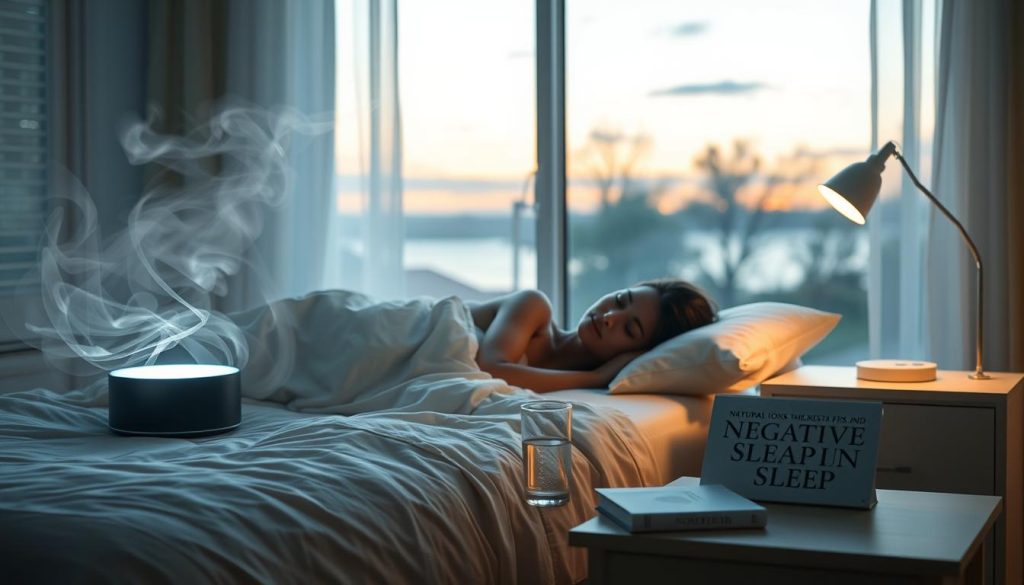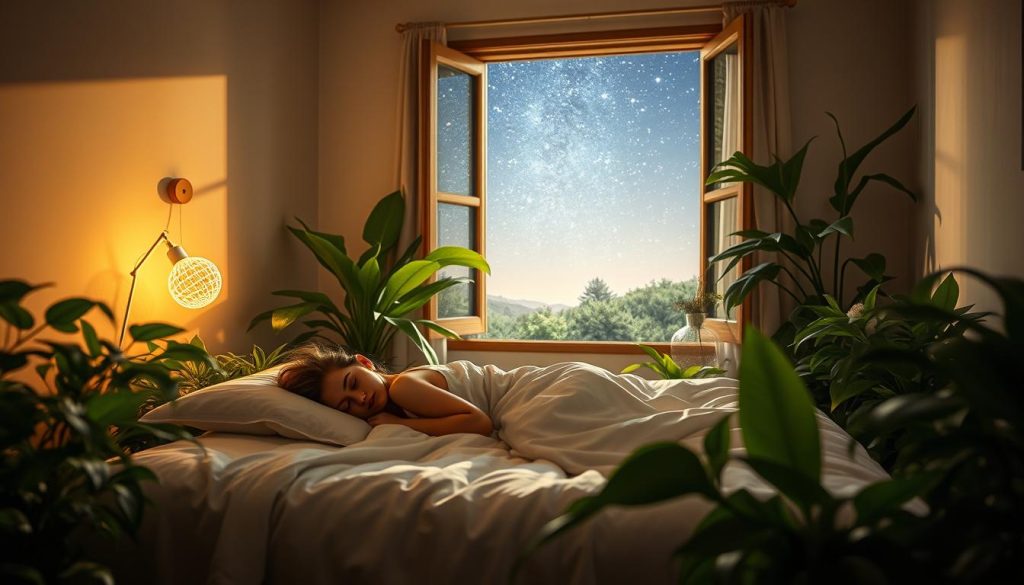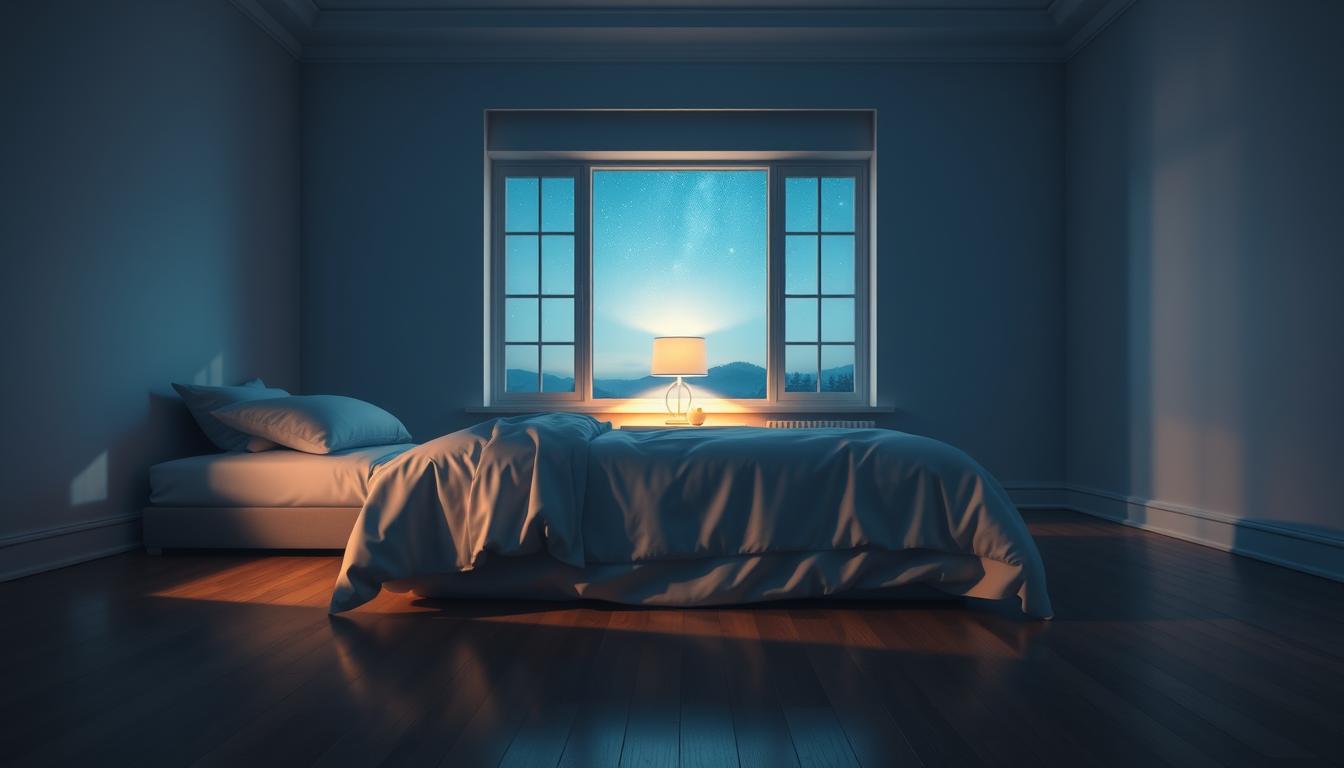Are you struggling to get a good night’s sleep? You’re not alone. Millions of people suffer from sleep issues, leading to fatigue, irritability, and decreased productivity. While there are many factors that can affect sleep quality, one natural solution that has gained attention in recent years is the use of negative ions.
Negative ions are tiny molecules that are naturally present in the air, especially in environments like waterfalls, beaches, and forests. These ions have been shown to have various health benefits, including improving mood, reducing stress, and enhancing sleep quality. By incorporating negative ions into your sleep environment through air ionization or other methods, you may be able to unlock the secret to more restful, rejuvenating sleep.
In this article, we’ll explore the science behind negative ions and their potential to improve sleep quality. We’ll also discuss practical ways to incorporate negative ions into your sleep routine, from using negative ion generators to making simple lifestyle changes. By the end, you’ll have a better understanding of how this natural sleep aid can help you achieve the restful, restorative sleep you deserve.
Understanding Negative Ions and Their Benefits
Negative ions are tiny molecules that carry a negative electrical charge. These molecules are naturally abundant in environments such as waterfalls, beaches, and forests, where they contribute to the fresh, invigorating air quality. Understanding the negative ion definition and their potential health benefits can help you harness their power to improve your overall well-being.

What Are Negative Ions?
Negative ions are oxygen atoms that have gained an extra electron, giving them a negative charge. They are created through natural processes such as water molecules breaking apart, or by artificial means like negative ion generators. These ions are believed to have various positive effects on the human body and mind.
How Negative Ions Affect the Body and Mind
Exposure to negative ions has been linked to several health benefits, including:
- Mood enhancement: Negative ions may help elevate mood and alleviate symptoms of depression and seasonal affective disorder (SAD).
- Stress reduction: Breathing in air rich in negative ions can promote relaxation and reduce stress levels.
- Improved cognitive function: Some studies suggest that negative ions can enhance mental clarity, concentration, and memory.
- Air purification: Negative ions attach to airborne pollutants, such as dust, pollen, and smoke, causing them to clump together and fall to the ground, effectively cleaning the air.
By understanding the potential benefits of negative ions, you can take steps to incorporate them into your daily life, whether by spending more time in nature or using negative ion generators in your home or workplace.
The Connection Between Negative Ions and Sleep
The presence of negative ions in your sleeping environment can significantly impact the quality of your sleep. Negative ions work in two primary ways to promote better sleep: by regulating melatonin production and reducing stress and anxiety levels.

Negative Ions and Melatonin Regulation
Melatonin is a hormone produced by the pineal gland that plays a crucial role in regulating our sleep-wake cycles. When melatonin levels are balanced, we experience more restful and rejuvenating sleep. Exposure to negative ions has been shown to help regulate melatonin production, promoting a more stable sleep schedule and improving overall sleep quality.
A study conducted by the Department of Psychiatry at Columbia University found that negative ion exposure increased the production of melatonin in participants, leading to improved sleep quality and reduced symptoms of sleep disorders such as insomnia.
Reducing Stress and Anxiety for Better Sleep
Stress and anxiety are common culprits behind poor sleep quality and sleep disorders. When we are stressed or anxious, our bodies release cortisol, a hormone that can disrupt our sleep patterns and make it difficult to fall asleep or stay asleep throughout the night.
Negative ions have been shown to have a calming effect on the mind and body, helping to reduce stress and anxiety levels. By promoting a sense of relaxation and well-being, negative ions can create a more conducive environment for restful sleep.
- A study published in the International Journal of Molecular Sciences found that exposure to negative ions resulted in a significant reduction in anxiety levels and an improvement in overall mood.
- Another study by the University of California, Irvine, discovered that negative ions can help alleviate symptoms of seasonal affective disorder (SAD), a condition that can cause sleep disturbances and other mood-related issues.
By incorporating negative ions into your sleep environment, you can harness their natural benefits to promote melatonin regulation, stress reduction, and anxiety relief, ultimately leading to better sleep quality and reduced risk of sleep disorders.
Sources of Negative Ions in Nature
Nature provides us with an abundance of natural negative ion sources that can help improve our sleep quality and overall well-being. Spending time in outdoor environments rich in negative ions can have a profound impact on our physical and mental health.

Waterfalls, Beaches, and Mountains
Some of the most potent natural sources of negative ions include waterfalls, beaches, and mountains. The crashing water in waterfalls and the breaking waves at beaches generate large quantities of negative ions in the surrounding air. Similarly, the fresh, crisp air found at higher elevations in mountains is also rich in negative ions.
Spending time in these environments can help you feel more relaxed, energized, and focused. Here are some of the best places to find high concentrations of negative ions in nature:
- Niagara Falls, USA/Canada
- Iguazu Falls, Argentina/Brazil
- Yosemite National Park, California, USA
- Swiss Alps, Switzerland
- Great Smoky Mountains, USA
Indoor Plants as a Source of Negative Ions
While spending time outdoors is ideal for exposure to natural negative ion sources, bringing nature indoors can also help improve indoor air quality and provide a source of negative ions. Certain air-purifying plants have been shown to release negative ions and remove toxins from the air.
Some of the best indoor plants for generating negative ions and purifying the air include:
| Plant Name | Negative Ion Generation | Air Purification |
|---|---|---|
| Snake Plant | High | Removes formaldehyde, xylene, toluene |
| Peace Lily | Moderate | Filters benzene, trichloroethylene, formaldehyde |
| Spider Plant | Moderate | Absorbs carbon monoxide, xylene, formaldehyde |
| Gerbera Daisy | High | Removes trichloroethylene, benzene |
Incorporating these plants into your bedroom or living spaces can help create a more relaxing, sleep-friendly environment by improving indoor air quality and boosting negative ion levels.
Negative Ions and Sleep: Scientific Evidence
The connection between negative ions and improved sleep quality is supported by numerous scientific studies and research findings. These evidence-based investigations have consistently demonstrated the positive impact of negative ions on various aspects of sleep, providing compelling reasons to incorporate these beneficial particles into your sleep environment.
One notable study published in the Journal of Negative Results in BioMedicine found that exposure to negative ions significantly reduced sleep latency, the time it takes to fall asleep. Participants in the study who were exposed to high concentrations of negative ions fell asleep an average of 7 minutes faster compared to those in a control group.

Furthermore, a research paper presented at the International Conference on Indoor Air Quality and Climate revealed that negative ions can contribute to deeper, more restorative sleep. The study monitored the brain wave patterns of subjects sleeping in rooms with varying levels of negative ions. Those exposed to higher concentrations exhibited increased delta wave activity, which is associated with deep, slow-wave sleep crucial for physical and mental rejuvenation.
The following table summarizes key findings from selected scientific studies on negative ions and sleep:
| Study | Key Findings |
|---|---|
| Journal of Negative Results in BioMedicine | Exposure to negative ions reduced sleep latency by an average of 7 minutes |
| International Conference on Indoor Air Quality and Climate | Higher negative ion concentrations associated with increased delta wave activity during sleep |
| Journal of Alternative and Complementary Medicine | Negative ion therapy improved overall sleep quality in 78% of participants |
These scientific studies and research findings provide strong evidence for the role of negative ions in sleep quality improvement. By harnessing the power of these naturally occurring particles, you can create a sleep environment conducive to faster, deeper, and more refreshing sleep, ultimately leading to enhanced overall well-being.
Incorporating Negative Ions into Your Sleep Environment
To reap the benefits of negative ions for better sleep, it’s important to create a bedroom environment that promotes optimal sleep hygiene. By incorporating negative ion devices and making mindful bedding choices, you can transform your sleep space into a haven of restfulness and rejuvenation.
Using Negative Ion Generators
Negative ion generators are devices designed to release negative ions into the air, mimicking the natural ionization found in nature. By placing a negative ion generator in your bedroom, you can create an atmosphere that promotes relaxation and enhances sleep quality. Look for high-quality generators with proven effectiveness and consider factors such as room size and noise level when making your selection.
Himalayan Salt Lamps and Their Benefits
Himalayan salt lamps are another popular option for introducing negative ions into your sleep environment. These natural lamps are crafted from pink Himalayan salt crystals and emit a warm, soothing glow. When heated, the salt lamp releases negative ions, helping to purify the air and create a calming ambiance. Place a Himalayan salt lamp on your bedside table or in a corner of your bedroom to enjoy its gentle light and negative ion benefits.
Choosing the Right Bedding Materials
The bedding materials you choose can also impact your sleep quality and the presence of negative ions in your bedroom. Opt for natural, breathable fabrics like cotton, bamboo, or linen, which allow for better air circulation and reduce the buildup of static electricity. These materials are less likely to attract dust and allergens, promoting a cleaner and healthier sleep environment. Additionally, consider using a mattress and pillow protectors to minimize exposure to potential irritants and maintain the freshness of your bedding.
By incorporating negative ion devices, Himalayan salt lamps, and carefully selected bedding materials, you can create a sleep-conducive bedroom environment that harnesses the power of negative ions. These simple yet effective strategies can help you achieve a more restful and rejuvenating night’s sleep, allowing you to wake up feeling refreshed and energized.
Lifestyle Changes to Enhance the Effects of Negative Ions
In addition to incorporating negative ion sources into your sleep environment, making certain lifestyle modifications can further enhance the benefits of negative ions for improved sleep quality. By focusing on regular exposure to nature and reducing electronic device use before bed, you can create a more conducive atmosphere for restful sleep and maximize the positive effects of negative ions.
Embracing Outdoor Activities and Nature
Engaging in outdoor activities and spending time in nature are excellent ways to boost your exposure to negative ions. Whether it’s taking a walk in the park, hiking in the mountains, or simply sitting by a nearby lake or river, immersing yourself in natural environments can help you reap the benefits of negative ions. Make it a habit to spend at least 30 minutes outdoors each day, preferably in areas with abundant vegetation or near moving water sources.
Implementing a Digital Detox Before Bedtime
Electronic devices like smartphones, tablets, and computers emit blue light, which can interfere with your body’s natural sleep-wake cycle. To optimize the effects of negative ions on your sleep quality, it’s crucial to practice good sleep hygiene by reducing electronic device use before bed. Implement a digital detox at least an hour before your intended bedtime. Instead of scrolling through social media or checking emails, engage in relaxing activities like reading a book, practicing gentle yoga, or listening to soothing music.
By incorporating these lifestyle modifications into your daily routine, you can create a more harmonious environment that complements the benefits of negative ions. Regular exposure to nature through outdoor activities and minimizing electronic device use before bed can significantly contribute to improved sleep quality, allowing you to wake up feeling refreshed and rejuvenated.
Frequently Asked Questions About Negative Ions and Sleep
As more people learn about the potential benefits of negative ions for improving sleep quality, it’s natural to have some common questions and concerns. This FAQ addresses the most frequently asked questions about negative ion safety and long-term effects to help you make informed decisions about incorporating negative ions into your sleep routine.
One of the most common questions is whether negative ion generators are safe to use. The good news is that negative ions are naturally occurring and generally considered safe. However, it’s important to choose a high-quality negative ion generator from a reputable manufacturer and follow the instructions carefully to ensure proper use and avoid any potential issues.
Another FAQ is about the long-term effects of using negative ions for sleep. While more research is needed to fully understand the long-term impacts, studies so far suggest that regular exposure to negative ions can have lasting positive effects on sleep quality, stress levels, and overall well-being. As with any lifestyle change, it’s always a good idea to consult with your healthcare provider if you have specific concerns or underlying health conditions.
By understanding the answers to these common questions and concerns, you can feel more confident about integrating negative ions into your sleep environment and daily routine. Whether you choose to use a negative ion generator, Himalayan salt lamp, or simply spend more time in nature, the potential benefits of negative ions for improved sleep are worth exploring.

